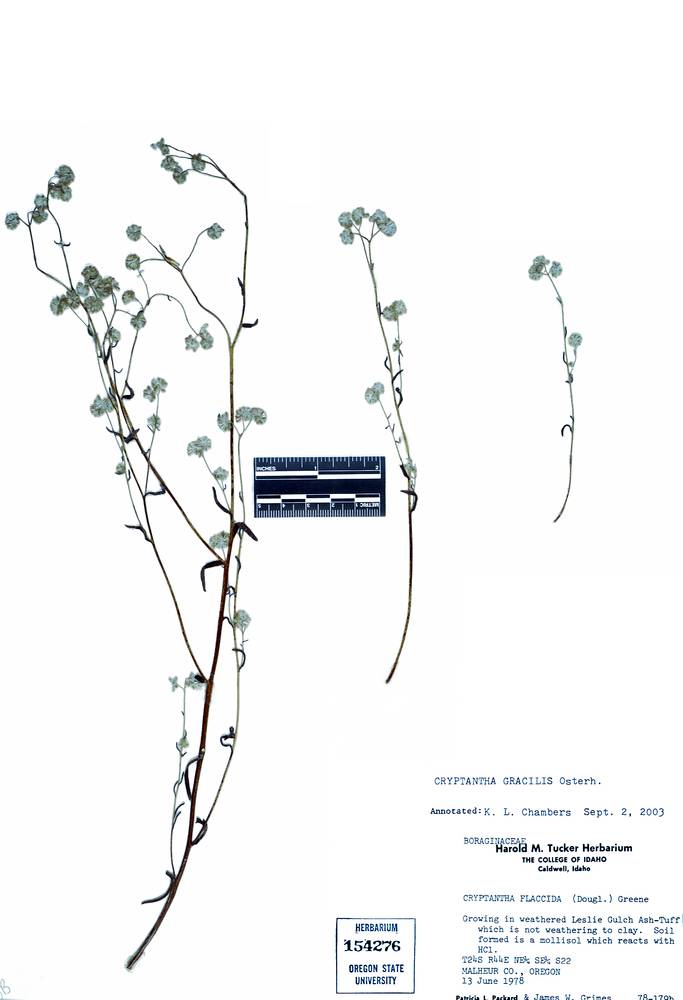
Plants 10–35 cm.
Stems erect, ultimate stems slender, unbranched or branched throughout, branches decumbent to erect, mostly spreading-hirsute.
Leaves cauline alternate, linear to oblanceolate, (5)10–50 × 1–3 mm, tips rounded to obtuse, surfaces spreading-hirsute, pustulose.
Inflorescences cymules solitary or paired, occasionally in 3s, 0.5–4.5(10) cm, initially somewhat glomerate but elongating somewhat in fruit, proximal-most flowers usually touching; reduced bracts occasionally at base; pedicels slightly elongating in fruit, 0.5 mm.
Flowers horizontal to inclined; calyces promptly deciduous at maturity, slightly asymmetric, ellipsoid to ovoid with acutely obconic base, 1.5–2 mm at anthesis, 2–3 mm in fruit, lobes basally connate, lanceolate to narrowly elliptic, basally connate, sometimes connate proximally, margins densely long ascending white hirsute, midribs slightly thickened, hairs soft, with longer, coarser but not hispid hairs, tips usually erect, abaxial surfaces with 1 hair type, usually tufted long soft-hirsute, hairs soft, adaxial surfaces glabrous basally, appressed short-hirsute apically; corollas funnelform to rotate, tubes 1 mm, limbs 1–2.5 mm in diameter; fornices yellow; gynobases extending to 50% and styles to 75% length of mature nutlets; flower bracts absent.
Fruits usually 1, positioned toward inflorescence axis, (seldom 2 or 3, then additional ones tending to be smaller and imperfectly developed), homomorphic in more than 1, lance-ovate, 3-sided, symmetric, 1.7–2.1 mm, brown, bases truncate, margins rounded, tips narrowly acute to slightly acuminate, surfaces smooth, shiny, abaxial surfaces low convex, often slightly concave basally, spinal ridges absent, adaxial surfaces 2-planed-convex, occasionally swollen proximally, narrowed distally and appearing somewhat vertically ridged, mid-line regions straight or angled outwardly above nutlet middle; attachment scars centered, edges not raised, abutted to slightly gapped especially at base, occasionally overlapping, margins short bifid-forked at extreme base, areoles absent or minutely triangular.
Sandy, gravelly, or clay soils, juniper or pinyon pine-juniper communities. Flowering Mar–Jun. 800–1600 m. BR, Owy. CA, ID, NV, WA; east to WY, southeast to NM. Native.
Cryptantha gracilis is morphologically distinctive in having long, soft-hirsute calyx hairs, a relatively small corolla, and a usually single, smooth, strongly three-sided nutlet. It appears to be a close relative of C. milobakeri (see discussion).